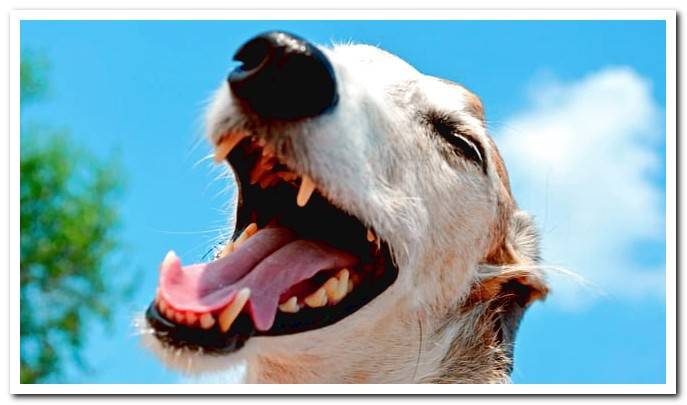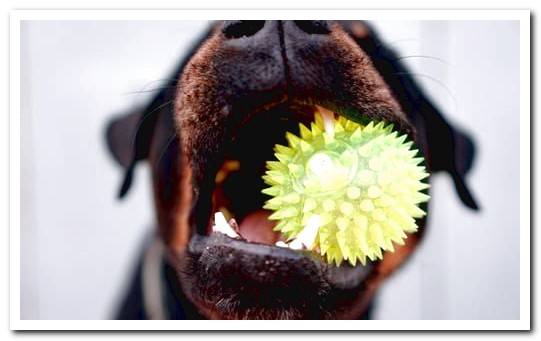
If you appreciate that your dog eats less or complains about eating, he may have a mouth infection known as gingivitis.
This type of infection affects the gums of dogs causing them to become inflamed, producing moderate pain that ends up being high if it is not treated with the appropriate medications. If you think your dog may have this problem, read on.
- You may also be interested in: How to clean my dog’s teeth
Index of contents
- 1 What is Gingivitis?
- 2 How does Gingivitis originate?
- 3 Is Gingivitis dangerous for my dog?
- 4 What is the treatment for Gingivitis?
- 5 How to avoid Gingivitis
What is Gingivitis?
Gingivitis is a type of infection that occurs when gums become inflamed, which causes a lot of discomfort and generally a lot of pain. In many cases the pain is so high that the dog even stops eating.
This inflammation is one of the initial phases of a more serious problem: periodontal disease. And if it is not treated with the proper treatment, the infection ends up destroying tissues that serve to keep the teeth in place.

How does Gingivitis originate?
There are various causes that can cause gingivitis in our dog, but the main ones are accumulation of bacterial plaque in the dog’s teeth. Poor dental hygiene causes this plaque to calcify, harden, and develop tartar.
Plaque is a thin, yellowish coating of bacteria, mucus, and food residue. It can be removed by brushing or dental rewards. Tartar, on the other hand, is more difficult to disappear, for this you can opt for a dental cleaning in a veterinary clinic or to add bones in the feed of the dog (with control).
Is Gingivitis dangerous for my dog?
When bacterial plaque and tartar are not removed properly, that’s when the infection known as gingivitis can start. As this infection progresses, the gums will become redder and more swollen.
And other symptoms will appear such as:
- Halitosis or bad breath
- Gum Bleeding / Ulcers
- Irregular gum line and pus accumulation
- Chewing discomfort (moderate or high pain)
- Excessive salivation
Gingivitis causes pain and, if not treated in time, phlegmons may appear. Yes bacteria reach the body through the bloodstream, the infection could spread internally to other organs, such as the liver or kidneys, with fatal consequences for the dog’s health.
On the other hand, if l your teeth start to move There is a risk of them falling and the dog losing several of its teeth.

What is the treatment for Gingivitis?
If treated early, gingivitis can be completely cured. Treatment will depend on the phase of the infection. If you see that your dog’s gums are red and swollen, take him to the vet urgently.
Generally, the vet will give us the most appropriate treatment consisting of antibiotics, anti-inflammatories and possibly some type of mouthwash for dogs.
Further, plaque and tartar buildup should be removed on the gums, so they don’t get inflamed again. For this you may need to sedate the dog, clean and polish its teeth to clean all the teeth.
If gingivitis is very serious, your vet may take dental x-rays to see the health of your teeth and bone mass. Sometimes other diagnostic tests are also performed, such as a gingival biopsy, in which a tissue sample is removed for analysis.
How to avoid Gingivitis
Unlike what happens with other diseases and illnesses, which are difficult to prevent, in the case of gingivitis and periodontal disease it is simpler: the fundamental thing is to make sure that the dog has a good oral hygiene, preventing plaque and tartar from accumulating on your teeth.
For this you can perform a regular brushing with special brushes for dogs that they sell in specialized stores and in veterinary clinics. There you can also find mouth rinses and toothpaste. The vet will be able to recommend what is best, taking into account the characteristics of the dog.
If your furry friend is reluctant to brush, you can always look for an alternative, such as the use of dental snacks or bones for dogs. These, along with chewable toys that stimulate salivation, work well to remove tartar and prevent gingivitis.
